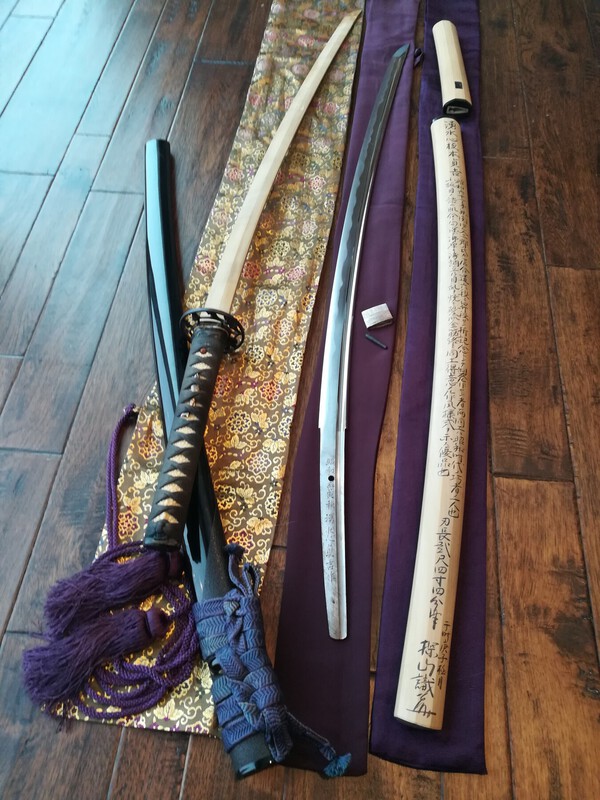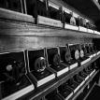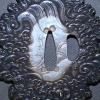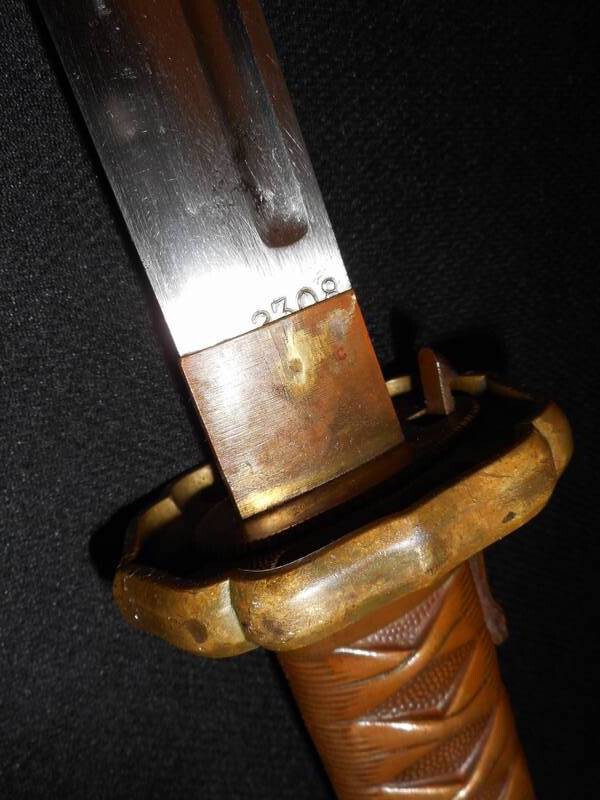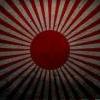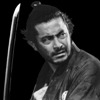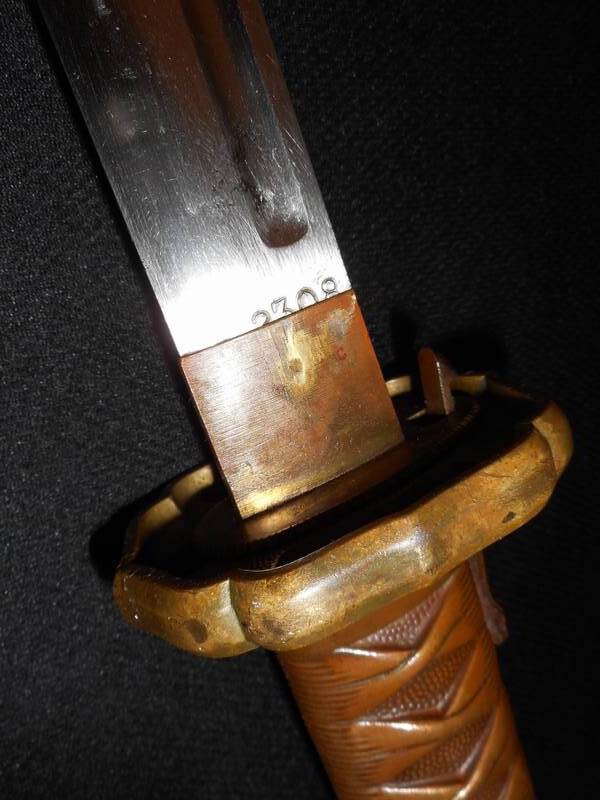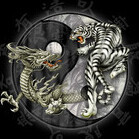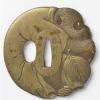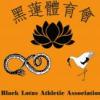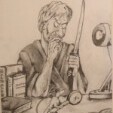Leaderboard
Popular Content
Showing content with the highest reputation on 01/05/2021 in all areas
-
Shared this on FB and forgot to post here before the busy weekend, my apologies, enjoy! Acquired this katana by Enomoto Sadayoshi(Mukansa) this past spring but has been in Japan until now for fresh shirasaya before having the honor to receive sayagaki by Tanobe. With a 74.2cm nagasa this blade was commissioned in 1986 for iaido master Sekiguchi to his exact specifications and was also a commemoration for ascending to 7th dan. Enomoto Sadayoshi (1908-2000) began his studies under Gassan Sadakatsu becoming one of the most prolific and active smiths of the century later receiving Mukansa. He worked in the styles of Soshu Den, Yamato Den and Gassan Den. Due to attachment limitations il attach a couple teasers, the rest can be found at the link below: https://imgur.com/gallery/YH8Pbls4 points
-
Happy New year folks! Here is a project of mine that I think some might enjoy. This PDF should have all sword related National Treasures (Kokuhō - 122 items), Important Cultural Properties (Jūyō Bunkazai - 792 Items) and former designation Important Art Object (Jūyō Bijutsuhin - 1096 items + 5 EX blades). I have written all of the names in Latin alphabets but I have always included all of the kanji, so you will find lots of signatures in this one. There can be an error or two in the mix as I wrote all of them in by hand and there are thousands of characters to type in. However while doing so I got to check for errors like if years actually are correct, etc. So I kinda did checkup at the same time. There should be 137 Named swords - for which I used term Meitō in this index. There are probably some more in there but for these I have 100% confirmity as I have them in reputable books or online sources from Japan, as well I have the Japanese characters to all of these named swords. How does this work. Well you have 86 pages of swords & items indexed. At first it might seem that there is logic and there is not. First we start with National Tresures, followed by Important Cultural Properties and last the Important Art Objects. This part is logical but the actual placement of items in first two categories are not. As you can see the number in front and you will most likely wonder what it is, here is the explanation for that. I have checked all my data entries to database of Agency for Cultural Affairs. You can find the said database in HERE. They have assigned a number to each item, and I have gone through all the items in crafts section and added them in number by number to make sure there are no duplicates in. The database is only for current designations and as a former category Jūyō Bijutsuhin items are not featured. However I have the old set of books that feature all of the sword related Jūyō Bijutsuhin items, and I have typed them in numerically as they appear in the books. Just note that this is just an index. However you can find some info per item from the database I linked above. Likewise I should have extra information for I guess at least 90% of the swords. But this is just an index and I do have some far superior work in progress to this going on for multiple years. The format is very simple and this should be extremely easy to use. Item number - Item type - Maker - Signature. Few notes, I did not transliterate fitting or koshirae themes as I didn't feel I would get them correct, similarily I didn't type in kinzōgan or kiritsuke mei etc. However for those that I have the data I typed in the kanji so items that you might find interesting you can use the kanji. Same goes for long signatures on the swords. The format is simple, there is just maker and possible year. Signatures are typed in kanji so you can research more on your own. Check it out and I hope it is a fun one, might be totally boring to some. Kokuho & Bunkazai Index.pdf3 points
-
2020 wasn't all that bad, as I review the 2 dozen tsubas acquired during the year i am feeling quite pleased. A side/budget project of mine as I reserve/spend the vast majority of the funds on blades... https://imgur.com/gallery/pe1Dfbe3 points
-
I think you did a great job given what you had available. To try and make this a kantei book or school id book would have meant this becoming a several hundred $ book and likely taken years to finish. It's a pity dimensions aren't taken more seriously by the museum, but it is what it is. Thanks for your efforts.3 points
-
John B. and Darrel L. I am very aware of the short comings of the Met book - however if you are looking for more information from the Met site - good luck , there is not much there. As to the cost - that is totally out of my control, if you think I receive more than a few cents for each book I sell, you are mistaken! As for clarity of image, better quality printing was available but would you have paid three times the price? As for scholarly work, one thing I have taken away from this site is that scholars all have different opinions and often get it wrong - so it was a conscious decision to only use the Museums information as much as possible, thereby you may argue with the museum if you like [ once again , good luck ]. Unlike Markus I can't just drop in on the Met and ask for any additional titbit as I live on the opposite side of the planet. If you check you will find measurements and materials are listed - just zoom in on John B.'s posted picture. Please feel free to do your own version at any time, the images and information I used are all in the public domain [hence the title]. Ps. Make sure you don't include any images or information not in the public domain or their lawyers will come down on you like a ton of bricks! Added : Taken from the preface Vol 1. - "Though a number are described in detail, a large proportion have only basic information relating to their dimensions, their providence or the donors who gifted them to the Museum." - If in doubt - read!3 points
-
Bruno that is a fantastic dream, I do hope it can happen sometime not too far away. I think Google image was supposed to do something like that, but it fails terribly, how many people have tried 'dropping' an image of a tsuba and getting picture feedback of belt buckles, badges or buttons! A picture data base was the aim of the Met books and the design book for that matter - it is a technical problem to index images in a useful way - goodness we humans have enough trouble comparing images by eye as it is ! Peter, thank you, my book sales keep me in the poverty I have grown accustom to. [ It is a hobby that keeps me home, and not down the pub - which is convenient because I don't drink anyway - win win!]2 points
-
Some very interesting tsuba that I'd love to own - Well done2 points
-
Dale, my highest respect for your non commercial labor. Keep on going... Best2 points
-
some very nice guards, congratulations! I actually thought 2020 was pretty darn good, maybe it just shows how bad my 2019 was?!2 points
-
Always a treat to see a great shinsakuto get this kind of treatment. Congratulations! PS: I think Tanobe sensei liked it.2 points
-
There was a similar sword on the market in Australia about a year ago, with a similar story for about half that price. The asking price of this one would probably be justified if there is an official order or request from the Emperor to make this sword, rather than made as a gift or celebration. Then, why isn't it in the Royal Family sword collection, or being sought by a Japanese museum? I have and have seen swords made in WW2 for "The Royal Prince" and "The Crown Prince" by makers like Sadakatsu, but these are celebration swords. Anyway, it would look nice in my collection! Akihide is a good sword smith.2 points
-
Yes, in normal times you could bring the sword to a sword show, or some other venue where the US branch of NTHK offers authentication services. Or, you could send it to Japan for authentication by the NBTHK, which is sort of the gold standard for sword authentication. Sending to Japan is quite labor intensive, as it involves getting the sword registered once imported, and then de-registering it again once it has been appraised and is ready for export. Covid is making all of this much more complicated. I haven't looked lately at the NBTHK site, but I thought someone on this forum mentioned they were looking at ways to authenticate swords online. http://www.japaneseswordindex.com/origami.htm However, the sword has to be in a condition that will allow them to authenticate it - meaning the sword has to be in reasonably good polish. Also, they won't authenticate swords that have fatal flaws (unless it is some exceptionally, historically important sword). You could pay thousands for a sword polish only to discover a crack in the blade, which would likely get a sword like this kicked from the authentication process. If you are in New Jersey, maybe there is someone on this forum who lives nearby who can take a look. Otherwise, look out for sword shows once the virus calms down a bit. Bear in mind, most everyone who looks at the sword is probably going to say "too rusty to see anything". I think its best to keep as an artifact. You could get new furnishings (scabbard, handle, etc) made for it to at least make it look more presentable, but that too would be a labor of love costing over a thousand bucks.2 points
-
刀銘日州国正作平成二十九年夏 備前祐定皆焼に倣う複式互の目丁字刃文板目肌の地金其我意を十分に現す会心作也 於日向国平岩郷松葉景一路国正平成二十九年五月八日 Mei: Nisshū Kunimasa Heisei 29 Summer A heartfelt work that well expresses the desire to replicate the hitatsura of Bizen Sukesada, with undulating chōji and itame hada Hyūga, Hiraiwa city, Matsuba Ichirō Kunimasa. Heisei 29, May 8th. Nisshū is the old province of Hyūga, now part of Miyazaki prefecture. Great sword.2 points
-
I have just put out a 'new' book updating and refreshing an 1850s design book of metal carving patterns, mainly for sword fittings. Two versions will be available, the first is printed on gloss paper through Blurb - https://www.blurb.com/b/10516296-album-of-designs-for-metal-carving-ch-sen-gafu-de The second will soon be available through other book outlets like Amazon, Abebooks etc. on matte paper at a cheaper price. Text is limited to a few pages in the original Japanese with approx. 150 pages of multiple illustrations in colour. The book is called "Chōsen Gafu" Album of Designs for Metal Carvers by Ranzan Tsuneyuki. The original is in the Metropolitan Museum of Art as a scrap book collection of designs compiled over a number of years, the images have been cleaned up and enhanced with many of the smaller designs enlarged for better clarity, so it is not a facsimilie copy and is aimed at showing the designs to their best effect. I hope the book finds a good audience.1 point
-
1 point
-
This is what I have so far. Serial Number = Rework Number 5809 = ホ2182. 5847 = ホ1792 [A Nice Early Japanese Type 95 Copper Handle NCO Samurai Sword]. 5869 = ホ2023 [JM&CS&D]. 5875 = ホ1522 5979 = 2363 [unverified] 6320 = 2552 [nakago has a Kokura logo & ホ.] 6444 = ホ1807 [Type 95 Copper Handle NCO Sword]. 6561 = 501 [unverified] Just a note that the ホ stamp and/or serial number is frequently partially covered by the habaki. This indicates the stamp and/or serial number was applied when the sword was disassembled. For an example, see BangBangSan's post #10 above, third picture down.1 point
-
Not so much the scratches, Thomas. Terrible quality pictures, but they show how indistinct the numbers are. I think the blade has been heavily sanded to make it look better and remove rust or patina. I can't be sure, but that's what I suspect. I assume you've added the 4 sets of rework numbers from Dawson to your sample?1 point
-
Yeah John you're are right. When things get better outside ill go in a shop and a hopefully a local club to get a better opinion. Thanks a million for the info1 point
-
Mebbe - but you have it in front of you and pictures can be misleading. Have someone check it out at a (relatively) local club or send it off for an opinion, maybe to Ted Tenold a Japanese trained polisher in the USA: http://www.legacyswords.com1 point
-
BangBangSan, the observed rework serial range for these is 501 to 2552 and this is based upon eight examples. They seem to show up in the 5,000 to 6,000 serial number range. It is my opinion that these swords were reworked by the 1st Factory of Kokura Army Arsenal 小倉陸軍造兵廠第一製造所. Thank you for pointing out the lack of an original mekugi-ana on the rework. I had overlooked this important fact and it seems to indicate that the alteration/modification/rework was done at a factory and is not a field repair. Bruce, more likely an arsenal sword 造兵刀 tang was used rather than a Murata-tō 村田刀 tang? Vajo, could we be looking at two different repairs at two different time periods? That is the original Japanese rework and then a later postwar repair to the rear of the tang? Shamsy, could the scratch marks be caused by the removal of the tsuka and habaki or is it the other way around? That is, the tang was cleaned so as to allow the removal of the habaki?1 point
-
I can’t see that but typically if it doesn’t have a big red neon arrow pointing towards it then I often miss it. That said it would be unusual to weld a filed tang to a blade as the filing flags an issue, but in this game there’s probably nothing new. My take is - it isn’t the big name nagamitsu - why sell it cheap and/ or why mess with the tang if so? It might be a koto blade (pre1600) as what’s left of the tang patina might point that way but it’s an unreliable way to date swords. There’s been some care taken with cutting the grooves (if it’s the original tang) 😬 which might suggest some quality but, unfortunately, someone has filed the tang - maybe make it fit the shirasaya or to cover some other issue so it’s let down by that. It needs a viewing in hand, perhaps after a bit of work with uchiko, which might reveal some detail, to see if what merit it has.1 point
-
I have avoided making any comment on this for days now, but can't stand it anymore....... All things being of possible illusion, and I hope I'm way off base here...but my machinist eye cannot stop seeing a distinct line running thru the Nakago right where the Habaki would conceal it, visible on both sides, but most discernable on the left side. The apparent line runs perpendicular to the longitude of the blade. I can only guess, but it would appear that there is a possibility of the nakago being welded at this location. This would explain the heavy file marks(to cover up the weld repair) that do not match the original file marks, lower on the nakago, plus the distinct difference in the look of the steel both above the habaki area and below the possible weld area. Even the area of the Bohi looks tampered with and does not exactly match the bohi on the blade. My observation could easily be incorrect, as making assumptions from small photos can lead one down incorrect paths. Mark1 point
-
1 point
-
I think perhaps we are talking about a makura yari, or pillow spear, rather than a fukuro yari, which as John says , has a socket rather than the conventional nakago. Would love to see some pictures of the blade please Walter. All the best.1 point
-
1 point
-
1 point
-
The tang, especially with the stacked Kokura cannon balls and HO stamp, looks like it’s from a Muratato. Which could mean this was a for real factory repair job!1 point
-
This has been covered elsewhere, but it is standard to require a tax ID during import when packages are above a certain value. A SSN is a tax ID, but it is also possible to get a separate number you can use (usually for businesses). So the SSN is not required, but a tax ID is. Most people only have their SSN though. Nothing nefarious here.1 point
-
You might try running it past Ray Singer. I’ve got a vague memory of him correcting somebody on a kanji that IIRC was very like this one - with the additional stroke on the left. I can’t find the thread now and I couldn’t turn the kanji up Markus Sesko’s list or in a list of archaic characters so I may be just imagining it but Ray’s way better than me at this stuff and may be able to help.1 point
-
1 point
-
Bonjour Rodrigues, regardez ici. Je pense que c’est pas une vraie signature. Je ne peux pas trouver le premier kanji dans la dictionnaire, mais les autres pourraient etre lu “mori saku”. Je vous conseille de faire prudence avec cette lame parce-que il me semble que c’est au meiux une lame de pauvre qualite (il y a un manque d’attention fait dans l’ecriture de la signature), ou pir c’est entierement faux. Cordialement, John1 point
-
Thanks for the kind words everyone! Dale, the second tsuba was actually my very first piece acquired here on the NMB for pennies. I too can only describe it as 'amida'.1 point
-
Hi Greg, It is a given that the signature is false; the important Munechika never made a wakizashi (the form didn't exist until centuries after his period of work) and no wakizashi was ever legitimately signed on the tachi side of the nakago. What you have is, most likely, a low quality sword with a fake signature; sorry. Grey1 point
-
Hi Pietro, Checking for Germany, for example, it will be $24.50 for 1st class without insurance or $38.60 for priority with insurance. Cheers, Grey1 point
-
Grossly over-cleaned. The sarute is questionable and an unmatched saya. Not a good sword at all.1 point
-
definitely a bad investment... thanks to everyone for allowing me to see more clearly (and don't make a mistake)1 point
-
I got the two volumes of the NY Met tsuba and it is a great picture database to me. All initiative consisting in gathering pictures of tosogu is more than welcome (by the way I collect old auction catalogues which some time are not very clever in descriptions) . My dream would consist in having with an Artificial Intelligence system , picture comparison betwen my tsuba and a golden source (NBTHK?) ... Dale, you contribution is a key milestone. Thank you !1 point
-
Mike they are some good acquisitions! I am very interested in the second tsuba as I have a daisho of similar design. They are usually described as amida-yasuri but I think that is a generalization as the 'rays' are not continuous and are more the pattern of expanded metal mesh. I have seen them described as Amida-ishime-ji. Yours if I may say so is atypical in that it doesn't have an outlined seppa-dai, sukashi or hitsu, though I have seen others like yours. I have 40 examples including three of my own - I am aware that this design has been posted before [way back in 2006 I think?] and described as Tosho made, but from what examples I have, Tosho is also an easy out - Tosho with inlay? Tosho mukade? Tosho with shakudo fukurin? Regardless, I do like your piece. [Sorry if I hijacked your post] Steve is correct what was wrong with 2020? [I am not a touchy-feely person anyway!]1 point
-
1 point
-
a price difference between editions could be due to the amount of books ordered from the print company. bigger discounts with a larger order. the first copy was probably only1000 copies due to limited capitol to invest at the time.1 point
-
1 point
-
1 point
-
1 point
-
Excellent work Jussi. Thank you very much. This is a fantastic reference and a great effort1 point
-
You are a research machine! This is one I will add to the downloads section. Awesome work Jussi!1 point
-
Jussi, that's great job Again a very useful database I appreciate your selflessness. The amount of work and energy you share with us for free Thank you very much1 point
-
Yoshi as per Bangbangsan’s translation or maybe Nami: 浪 as there looks to be an extra stroke which might be a contraction of the water radical on the left.1 point
-
1 point
-
1 point
-
Hello, I wanted to show the last project. The order was for tsukamaki. However, after unwrapping the old braid, SAME was found to be in poor condition. I peeled off and cleaned SAME and then stained it using the traditional method. It was not the end of worries. The new fuchi and kashira needed a new spigot to make the fitter solid. On this occasion, I tried a new way to integrate new wood into the current wood. The wedge-shaped and additional 2 pins for this work gave a good effect. It shouldn't fall apart. Previously, I made flat inserts with 2 pins but I believe that the wedge will hold better if the tsuka was to be used for training. About tsukamaki. I learn something new every time. Currently, I plan to focus even more on shaping the washi paper under the braid. I believe my next tsuka will be even better. Thank You for watching. More photos and video here: https://www.flickr.com/photos/artur_drogamiecza/albums/721577174405814121 point





